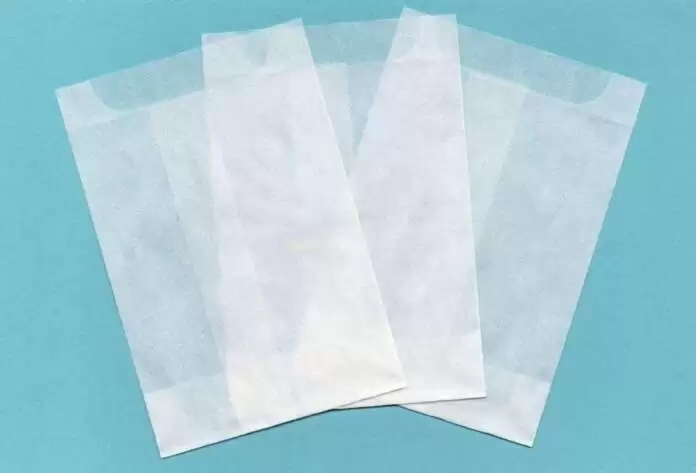Have you heard of glassine packaging? This material outshines ordinary packaging with its construction and appealing design. Only a limited selection of packaging materials provides impeccable protection and presentation of the contents.
This kind of special paper is acid-free, PH-neutral, water-resistant, and subjectable to sterilization for medical applications. Its properties make it a highly preferred material for both primary and secondary packaging.
Glassine is environmentally friendly because of its recyclable and biodegradable nature. It has multiple uses across different industries.
The following guide explains the properties, uses, and benefits of this material.
What is glassine?
This material is a glossy and smooth paper, resistant to water, grease, and air. While it’s not entirely waterproof, it provides solid atmospheric element resistance. Regardless of the way it looks and feels, it’s entirely made from wood pulp and manufactured in a process called supercalendering. Firstly, wood should be turned into pulp. Read more about the usage of such material.
Trees must be chipped for wood chips to get cooked and the chemical bond of lignin to be broken. In this way, cellulose gets separated in the process. The production of glassine paper requires an entire separation of the lignin, which is then treated and bleached. Afterward, lignin flows through a wire cloth for the water to drain through. Once the material becomes dry, it should be calendered by pressing it between pressure cylinders named calenders.
When the pressing process is complete, standard paper is already produced. Glassine, however, requires one more step named supercalendering, where paper is subjected to the same process repeatedly until the fibers are all facing the same direction. This process isn’t identical to basic pressing, as it makes changes to the cellular structure of the paper. Its fibers are broken down, which provides high density and a glossy finish.
Moreover, glassine has multiple sustainability characteristics, such as being recyclable and naturally biodegradable. This form of packaging is eco-friendly, allowing companies to reduce their environmental footprint. The bags, envelopes, and packets made from this material are green alternatives to foils, films, and plastic. They contain no dyes and coatings. The primary goal of such packaging is to minimize the environmental footprint of traditional packaging.
How does it differ from standard paper?
In order to better understand glassine bags, you should learn the differences between this material and standard paper. The former provides resistance to grease and moisture, whereas the latter absorbs water. Standard paper is known to absorb water through hygroscopicity, referring to the absorption of water vapor from the air, causing it to contract and expand. This site, https://www.thermopedia.com/content/869/, provides everything you need to know about hygroscopicity.
Another advantage of the former is being stronger and more durable compared to standard paper. Glassine has almost twice the density of paper, which explains its strength. It’s toothless; a term used to describe its roughness. The standard paper has a certain tooth, meaning there is a level of abrasiveness. Glassine, however, isn’t abrasive at all, which is excellent for the protection of delicate products.
Furthermore, other advantages of glassine over paper are the absence of shedding, translucency, and static-free nature. It doesn’t shed because paper fibers are pressed hard. Its translucency allows individuals to see the product inside the packaging. It also doesn’t produce any static.
Packaging solutions
Glassine bags, envelopes, and packets are used in numerous industries and have various applications. For example, in the market of seeds, such packaging allows seeds to be visible and to be dispensed without any problems owing to low friction. Conversely, in the laboratory and medical settings, this packaging material is used to provide protection of medical specimens and accessories. Its transparent properties enable medical professionals to identify package contents and transfer them quickly.
Food glassine bags are the most effective alternative to plastic packaging. Food manufacturers prefer a glassine bag over other packages, as it protects and effectively displays the contents. Chocolate producers take special advantage of these packages owing to their grease resistance and glossiness. In the cosmetic industry, such material is indispensable in preventing oils from leaving the package. These packets are usually used for soaps and bath bombs, allowing no residue to seep through.
In addition, collectors of insects, stamps, coins, photographs, and arts use the archival and acid-free traits of this material. Since the paper is PH neutral, photos and other specimens are perfectly protected. Individuals can view valuables without inflicting any damage. Glassine envelopes are recommended for storage and protection of stamps. When it comes to apparel, the smooth finish of such packages offers a high-end feel and look.
A final note
This special material has become the latest trend in the packaging industry.
It makes products look more glamorous while improving the brand image of companies and reducing carbon footprint!




